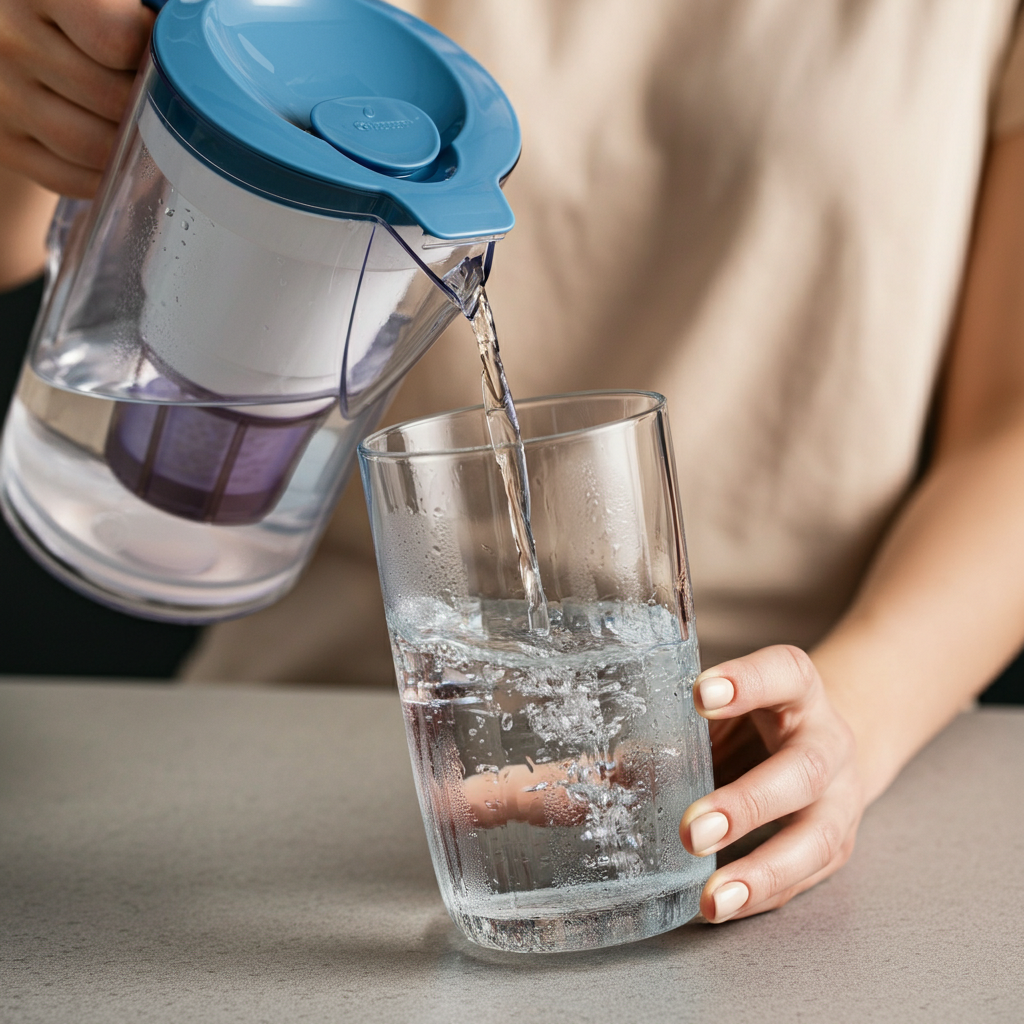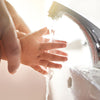Chlorine and chloramine are ubiquitous in municipal water supplies, serving as crucial disinfectants that safeguard us from harmful pathogens. However, their presence often necessitates removal to address concerns regarding taste, odor, and potential health implications. Fortunately, we can effectively remove chlorine and chloramine from water through various methods, including filtration, chemical neutralization, and aeration. Improving the taste and odor of drinking water, mitigating skin and hair issues caused by chlorinated shower water, and protecting sensitive aquatic life in aquariums are just a few reasons why individuals seek effective removal solutions.
Understanding Chlorine and Chloramine
Before delving into the removal methods, let's establish a clear understanding of chlorine and chloramine, their roles in water treatment, and their distinct characteristics.
What is Chlorine?
Chlorine, a highly efficient chemical disinfectant, plays a critical role in water treatment by eliminating harmful bacteria and viruses. Municipal water treatment plants adhere to strict guidelines set by the Environmental Protection Agency (EPA) to ensure the safety of drinking water. The EPA states on their website that "continuous disinfection is essential to protect drinking water from microbial contamination." In water, chlorine exists in two primary forms: free chlorine (HOCl), which exhibits higher disinfecting efficacy, and combined chlorine (chloramines), which offers greater stability and longevity. While chlorine is vital for water safety, it can impart a strong taste and odor, and some studies suggest potential long-term health effects, such as an increased risk of bladder cancer. However, the CDC reassures that "chlorine levels used in drinking water are unlikely to cause long-term health problems."
What is Chloramine?
Chloramine, formed by combining chlorine and ammonia, provides a longer-lasting disinfectant residual in water systems. Unlike chlorine, which dissipates relatively quickly, chloramine persists for extended periods, offering continued protection against microbial regrowth. This persistence, however, makes it more challenging to remove. Chloramine, generally safe for consumption at regulated levels, can pose specific concerns for certain applications. In aquariums, chloramine can harm fish and other aquatic life, while in brewing, it can react with malt compounds, creating undesirable flavors in beer.
Chlorine vs. Chloramine: Understanding the Differences
Both chlorine and chloramine are effective disinfectants, but they differ in their chemical properties, persistence in water, and potential effects. Chlorine, with its stronger taste and odor, dissipates more quickly, while chloramine, though longer-lasting, presents a greater challenge for removal. Understanding these differences is crucial for selecting the appropriate removal method for your specific needs.

Methods to Remove Chlorine and Chloramine from Water
A variety of effective methods exist for removing chlorine and chloramine from water, each with its own advantages and disadvantages.
Water Filtration
Water filtration is a popular and effective method for removing chlorine and chloramine, particularly for drinking water and showering. Different types of filters target these chemicals with varying degrees of effectiveness.
Activated Carbon Filters
Activated carbon filters, widely used for chlorine removal, operate through a process called adsorption. In this process, chlorine molecules bind to the surface of the activated carbon, effectively removing them from the water. These filters come in various forms, including granular activated carbon (GAC) filters and carbon block filters, each with specific attributes such as pore size and iodine number that influence their performance. GAC filters, often used in water filter pitchers and faucet attachments, effectively remove chlorine and improve taste and odor. Carbon block filters, with their finer filtration capabilities, can remove additional contaminants. For larger-scale chlorine removal, whole-house carbon filters, like the SoftPro® Whole House Chlorine+ Carbon Water Filter, provide a comprehensive solution. The SoftPro® Whole House Chlorine+ Carbon Water Filter is specifically designed to remove chlorine and chloramine from city water, ensuring clean and safe water throughout your home.
Catalytic Carbon Filters
Catalytic carbon filters, specifically designed for chloramine removal, utilize a specialized form of activated carbon that catalyzes the breakdown of chloramine molecules. These filters are highly effective for removing both chlorine and chloramine, making them suitable for applications like aquariums and brewing. The SoftPro® Catalytic Carbon Water Filter [WELL WATER] is an example of a catalytic carbon filter designed for well water systems. Unlike standard activated carbon filters, catalytic carbon filters actively break down chloramine, ensuring its complete removal.
Reverse Osmosis Systems
Reverse osmosis (RO) systems offer a multi-stage filtration process that effectively removes a wide range of contaminants, including chlorine and chloramine. RO systems force water through a semi-permeable membrane, leaving behind impurities and producing highly purified water. In addition to chlorine and chloramine, RO systems can remove heavy metals, dissolved solids, and other contaminants. The SoftPro® Reverse Osmosis System w/ Advanced Alkalizing RO Water Filter provides an advanced RO solution for comprehensive water purification.
Chemical Neutralization
Chemical neutralization involves using specific chemicals to neutralize chlorine and chloramine in water. This method is commonly used for smaller-scale applications or when immediate removal is required.
Potassium Metabisulfite (Campden Tablets)
Potassium metabisulfite, often in the form of Campden tablets, is a common chemical used to neutralize chlorine and chloramine, particularly in brewing and aquariums. Campden tablets effectively remove chlorine and chloramine, preventing them from affecting the taste of beer or harming aquatic life. However, it's important to use them according to instructions and consider safety precautions, as they can release sulfur dioxide gas.
Sodium Thiosulfate
Sodium thiosulfate is another chemical used for chlorine and chloramine neutralization. It works similarly to Campden tablets, reacting with chlorine and chloramine to render them harmless. Sodium thiosulfate is commonly used in water treatment for dechlorination purposes and is available in various forms, including liquid and powder. Accurate dosage is crucial when using sodium thiosulfate to ensure effective neutralization without leaving residual chemicals in the water.
Vitamin C
Vitamin C, specifically in the form of ascorbic acid, can also neutralize chlorine. This method is often used in shower filters, where the water flows through a cartridge containing vitamin C. While effective for chlorine removal, vitamin C might have limited effectiveness against chloramine and requires frequent cartridge replacement due to its relatively fast degradation.
Other Methods
In addition to filtration and chemical neutralization, other methods can help remove chlorine and chloramine from water, although they might have limitations or specific applications.
Boiling
Boiling water for an extended period can effectively remove chlorine through evaporation. However, this method is less effective for chloramine, which requires longer boiling times to achieve significant removal. Boiling is a simple and accessible method for small-scale chlorine removal, but it's energy-intensive and not practical for large volumes of water.
Aeration
Aeration involves increasing the exposure of water to air, allowing chlorine to off-gas. This can be achieved through vigorous agitation or by letting water sit in an open container for an extended period. Aeration is more effective for removing chlorine than chloramine and is often used in conjunction with other methods to improve taste and odor.
UV Purification
UV purification utilizes ultraviolet light to disinfect water and break down chlorine and chloramine. UV systems expose water to UV radiation, which neutralizes bacteria and viruses and can also degrade chlorine and chloramine molecules. UV purification is often used in combination with filtration methods to provide comprehensive water treatment. For example, the Pura UV-20 Systems 10 Micron Carbon Block Filter combines UV purification with carbon filtration for enhanced water treatment.
Choosing the Right Method

The best method for removing chlorine and chloramine depends on your specific needs and circumstances. Consider factors such as the intended use of the water (drinking, showering, aquarium), the presence of other contaminants, budget, and maintenance requirements.
- For drinking water, options like activated carbon filters, reverse osmosis systems, or boiling are common choices. If you're concerned about the taste and odor of chlorine in your drinking water, a simple solution like a Brita pitcher with an activated carbon filter can significantly improve the quality. For those seeking comprehensive purification, a reverse osmosis system, such as the SoftPro® Reverse Osmosis System w/ Advanced Alkalizing RO Water Filter, can remove chlorine, chloramine, and a wide range of other contaminants.
- To remove chlorine from shower water, vitamin C shower filters or whole-house carbon filters offer effective solutions. If you experience dry skin or hair damage from chlorinated shower water, a vitamin C shower filter can neutralize the chlorine, providing a more soothing shower experience. For whole-house chlorine removal, the SoftPro® Whole House Carbon Filter offers a comprehensive solution.
- For aquariums, catalytic carbon filters or water conditioners specifically designed for chloramine removal are essential. Chloramine can be harmful to fish and other aquatic life, so using a catalytic carbon filter, like the SoftPro® Catalytic Carbon Water Filter [WELL WATER], is crucial for maintaining a healthy aquarium environment.
Choosing the right method ensures that you effectively remove chlorine and chloramine while meeting your specific water quality needs.
Maintaining Chlorine- and Chloramine-Free Water
Once you've implemented a removal method, ongoing maintenance is crucial to ensure continued effectiveness.
- Regularly replace filter cartridges according to the manufacturer's recommendations. For instance, the Reverse Osmosis Replacement Filters for SoftPro GREEN RO Systems and the 5 Micron Replacement Filters for Pura UV-20 Systems ensure optimal performance of your filtration system.
- Periodically test your water for residual chlorine or chloramine using test kits or by sending samples to a laboratory.
- Consider whole-house filtration solutions for comprehensive removal throughout your home. The SoftPro® Smart Home+ Water Softener & Carbon Filter provides a comprehensive solution for both water softening and chlorine removal.
By proactively maintaining your water treatment system, you can enjoy chlorine- and chloramine-free water consistently.
Resources and Further Reading
For more information on chlorine and chloramine in water and their removal, we recommend exploring the following resources:
- Environmental Protection Agency (EPA): epa.gov
- Water Quality Association (WQA): wqa.org
- Centers for Disease Control and Prevention (CDC): cdc.gov
These organizations provide valuable information and guidelines on water quality and treatment.
Remember, choosing the right method for removing chlorine and chloramine is essential for ensuring the quality and safety of your water. By understanding the different options and considering your specific needs, you can make informed decisions to enjoy clean, healthy water for all your household purposes.

Achieving Optimal Water Quality: Chlorine and Chloramine Removal Strategies
Ultimately, while chlorine and chloramine play vital roles in water disinfection, their presence can necessitate removal to address concerns related to taste, odor, and potential health effects. The choice of removal method depends on individual needs and priorities, whether it's improving drinking water quality, protecting aquatic life in aquariums, or facilitating specialized applications like brewing.
Activated carbon filters, with their adsorption capabilities, effectively remove chlorine and improve taste and odor. Catalytic carbon filters, specifically designed for chloramine removal, are crucial for applications where chloramine's persistence poses a concern. For comprehensive purification, reverse osmosis systems remove not only chlorine and chloramine but also a wide range of other contaminants, including heavy metals and dissolved solids. Simpler methods like boiling and aeration can also reduce chlorine levels, particularly for smaller quantities of water.
Understanding the distinct properties of chlorine and chloramine, their potential effects, and the available removal methods empowers individuals to make informed choices for their specific water treatment needs. Regular maintenance, including timely filter replacement and periodic water testing, ensures the continued effectiveness of the chosen method, providing consistently clean and safe water.
For personalized guidance on selecting the optimal water treatment solution, explore the range of products offered by SoftPro Water Systems, including whole-house filtration systems, water softeners, and reverse osmosis systems. Contact our team of experts for personalized recommendations and to address your specific water quality concerns.


















![Aldex Premium 10% Cross Link Resin for Water Softener [High Capacity]-SoftPro® Water Systems](http://www.softprowatersystems.com/cdn/shop/files/Aldex_10_Cross_Link_Resin_Premium_High_Capacity_for_Water_Softener_600x.jpg?v=1735853599)
















